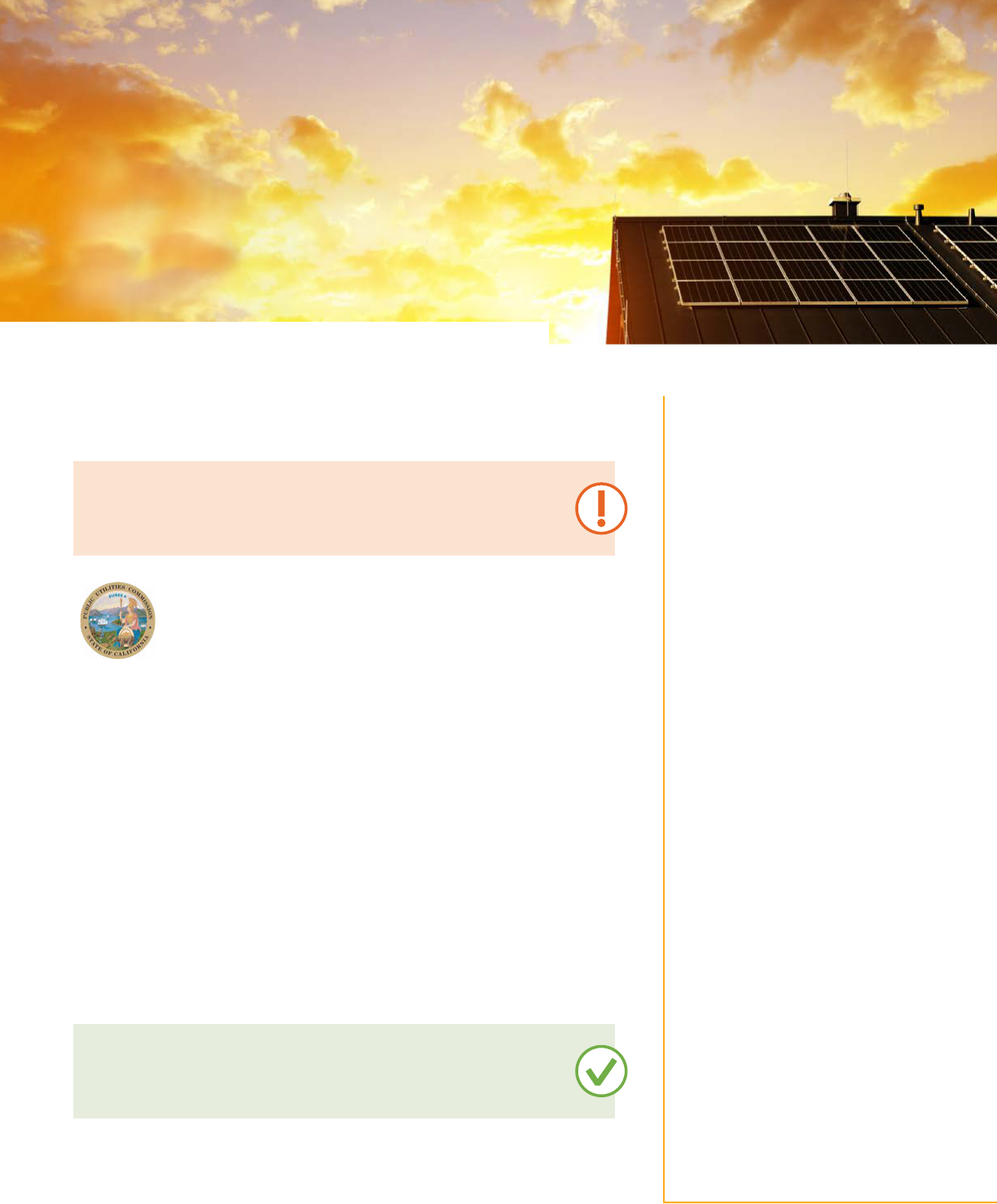
page 1
This guide is available at this government website: cpuc.ca.gov/solarguide
CALIFORNIA
SOLAR CONSUMER
PROTECTION GUIDE
Published March 2022
This guide provides important information to homeowners
thinking of going solar.
PUTTING SOLAR ON YOUR HOME IS AN IMPORTANT
FINANCIAL DECISION.
Don’t sign a contract until you read this document!
is guide is from the California Public Utilities Commission
(CPUC), a government agency that regulates privately-owned
utilities like Pacic Gas and Electric Company (PG&E),
Southern California Edison Company (SCE), and San Diego
Gas & Electric Company (SDG&E).
Customers of PG&E, SCE, SDG&E, BVES, and PaciCorp must initial and
sign this guide to connect a residential solar system to the electric grid. e
CPUC requires these companies to collect your signed copy of this guide to
ensure that you know your rights and have enough information to make a
decision. (is requirement does not apply to solar thermal systems or solar systems
in new home construction or multi-family buildings.)
Guide Accessibility
• Audio recording available at 855-955-1535.
• Español, 中文, 한국어, Tiếng Việt, Tagalog, Armenian, Portuguese, and
Dari versions available at 866-849-8390.
You should understand and initial the rst 4 pages and sign at the end of
this guide before you sign a contract for a residential solar system.
Initial here if you understand this page _____ (1/4)
What's Inside
Watch Out for False Claims ............... 2
Know Your Rights .............................. 3
Ask Solar Providers These Initial
Questions Before You Sign A Contract 4
STEP 1:
Is Solar a Good Fit for Me?.................5
STEP 2:
Understand Roles and
the Solar Process ...............................7
STEP 3:
Find a Qualied Solar Provider.........9
STEP 4:
Compare Your Financing
Options ............................................12
STEP 5:
Learn About Electricity
Bill Savings ...................................... 16
STEP 6:
Carefully Read All Paperwork .........19
STEP 7:
Review Additional Resources ......... 20
STEP 8:
“Before You Sign” Checklist ............ 22
STEP 9:
Sign This Guide ................................ 23
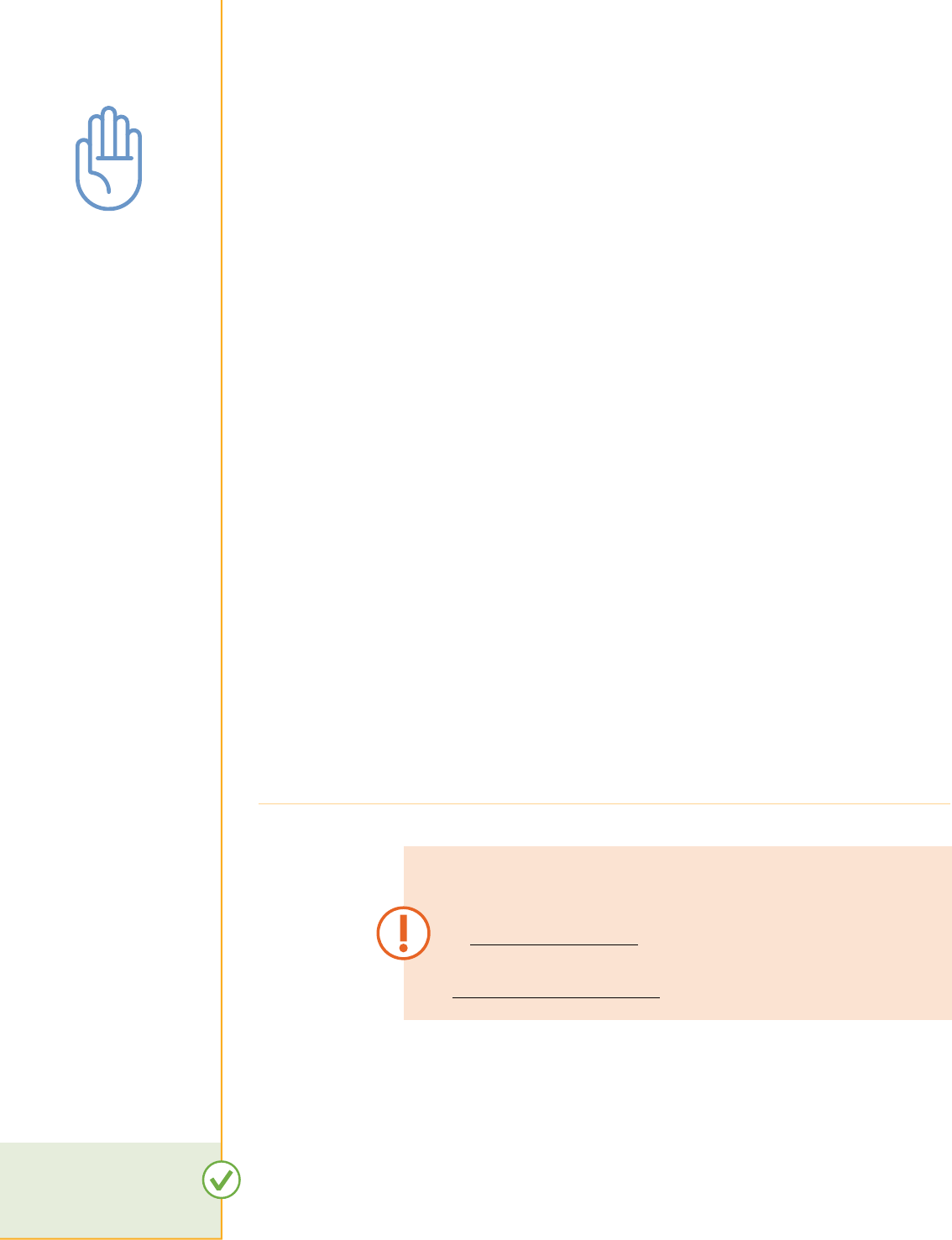
cpuc.ca.gov/solarguide page 2
Watch Out for False Claims
Most solar providers are honest and fair. However, there are still some
false claims you need to watch out for. Do not do business with a
salesperson who makes one of these false claims.
False Claim The Truth
You can get free
solar energy at no cost
to you.
Solar energy is rarely free. An honest company will be upfront about all the
costs you will pay over time.
There is one exception: a few government-funded solar programs oer free
or low-cost solar to low-income households. Go directly to page 6 to see
what government-approved organizations run these programs.
You will never pay an
electricity bill ever
again aer a solar
system is installed.
Aer going solar, you will typically pay a small electricity bill every month
and a larger electricity bill at the end of the 12-month cycle. See page 18
for an example.
Customers who take out a solar loan or sign a lease or power purchase
agreement will also receive a monthly bill from a loan company or
solar provider.
If you use Property Assessed Clean Energy (PACE) nancing, you will also
make a payment once or twice a year with your property taxes or monthly
with your mortgage payment.
Time is running out
and you must quickly
sign an electronic
tablet to get solar.
An honest salesperson would never rush you to sign anything without
giving you time to review what you are signing.
California law requires that a salesperson show you the contract terms
before you sign.
If you think you have been a victim of solar fraud, you may le a
complaint against a contractor or home improvement salesperson to
the Contractors State License Board (CSLB) at 800-321-CSLB (2752)
or cslb.ca.gov/consumers.
To le a complaint against a nancing company, visit
dfpi.ca.gov/le-a-complaint.
Initial here if you
understand this
page _____ (2/4)

cpuc.ca.gov/solarguide page 3
Know Your Rights
You have the right...
to read this entire 24-page guide before signing a contract.
e CPUC recommends that solar providers give out this guide during their rst contact with
potential customers. Do not feel pressured to read this guide while the salesperson waits. Ask
them to come back at a later date to allow you time to read it.
If you are a customer of PG&E, SCE, SDG&E, BVES, or PaciCorp, a solar provider must give
you time to read this guide before you sign a contract for solar. If they do not allow you to read
this guide, they cannot connect your solar system to the electric grid, and you should report them
to the to the Contractors State License Board (CSLB) at 800-321-CSLB (2752) or cslb.ca.gov/
consumers.
to a copy of a solar contract and nancing agreement in the language
in which the salesperson spoke to you.
If a solar provider or salesperson comes to sell you solar panels and speaks to you in a language
other than English, they must give you a copy of the contract in that language. Also, if you prefer
to read this guide in Spanish, Chinese, Korean, Vietnamese, or Tagalog, the solar provider or
salesperson must give you this guide in that language.
to a Solar Disclosure Document from your solar provider.
By law, a solar provider must provide you with a completed Solar Energy System Disclosure
Document created by the Contractors State License Board (CSLB). is one-page document
shows you the total costs for the solar energy system. A blank version of this document is
available at cslb.ca.gov/consumers/solar_smart.
to a 3-day cancellation period aer signing a contract.
You have at least three business days to cancel your contract for any reason. You may cancel the
contract by emailing, mailing, faxing, or delivering a notice to your solar provider by midnight of
the third business day after you received a signed, dated copy of the contract. If you are 65 years
of age or older, you have ve days. Note that dierent rules may apply for contracts negotiated at
a company’s place of business.
If your solar provider refuses to cancel the contract, report them to the CSLB at 800-321-CSLB
(2752) or cslb.ca.gov/consumers.
Initial here if you
understand this
page _____ (3/4)

cpuc.ca.gov/solarguide page 4
Ask Solar Providers These Initial
Questions Before You Sign A Contract
What is your Contractors State License Board (CSLB) license or registration number?
Ask for the solar provider’s CSLB license number. If you were contacted by a telephone or door-
to-door salesperson, ask for their individual home improvement salesperson (HIS) registration
number, too. en check the license and, if applicable, HIS registration numbers to make sure
they are valid and associated with the solar provider by going to cslb.ca.gov/consumers or calling
800-321-CSLB (2752).
• CSLB License Number is:________________________________________________________________________________________________________________
• (If applicable) HIS Registration Number is:_________________________________________________________________________________
e CSLB license must be active and in classication C-46 (Solar Contractor), C-10 (Electrical
Contractor), or B (General Building Contractor) in order to be valid. If your solar provider does
not have a valid contractor license, do not sign a contract with them and report them to the CSLB.
What is the total cost of the solar energy system?
If you are considering a solar loan, lease, or power purchase agreement, also ask:
• Is there a down payment?
• How much will I pay per month? When will these payments increase and by how much?
If you are considering PACE nancing, also ask:
• How much will I pay once or twice a year with my property taxes or monthly with my
mortgage?
• How many years will I pay this amount?
If I sell my home, what are my options and what do I need to do?
Ask your solar provider, lender, or PACE program administrator to show you where in the
contract it describes what happens when you sell your home.
OK, I read these 4 pages. Now what?
1
For a step-by-step guide
for how to go solar,
proceed to the next page.
This is recommended,
even if you’ve already
started the solar process!
2
Make sure to get bids
from at least 3 dierent
solar providers. See page
9 for more details.
3
For other important
questions to ask a solar
provider before you sign
a contract, go to page 10
of this guide.
4
If you already understand
the information listed in
the table of contents and
are getting ready to sign
a contract, you can skip
to the “Before You Sign”
checklist, on page 22 of
this guide.
Initial here if you
understand this
page _____ (4/4)

cpuc.ca.gov/solarguide page 5
STEP 1:
Is Solar a Good Fit for Me?
Solar photovoltaic panels can capture sunlight on your roof or
property and convert it into electricity. This electricity powers the
needs of your home, such as lights, electric vehicles, and appliances.
Before you consider getting solar at your home, ask yourself:
Have I made my home energy eicient rst?
Reducing your energy use can reduce the size of the solar system you need, potentially saving
you thousands of dollars. Visit energyupgradeca.org/home-energy-efficiency and/or
contact your electricity provider for energy eciency tips and advice on how to get a home
energy assessment. You may also want to ask your electricity provider about residential demand
response programs.
Do I qualify for low-income solar programs?
If you think you might qualify for a low-income solar program, be sure to read page 6. ere
are residential solar and community solar programs available for qualifying low-income PG&E,
SCE, and SDG&E customers that could save you money with no nancial contribution.
Is my roof suitable for rooop solar?
• Does my roof receive a good amount of sunlight or is it mostly shaded? What direction does
the roof face? Roofs that are mostly shaded or face due north are not good candidates for
solar. If you plan to replace your roof soon, you should replace it before installing a rooftop
solar system.
• If your roof is heavily shaded or isn’t in great condition, or if you are a renter, community
solar programs could be a good t for you. With community solar, you receive 50-100 percent
of your electricity from solar projects located across California. Community solar programs
vary and may increase your electricity bill or provide an electricity bill savings. Contact your
electricity provider for more information.
1
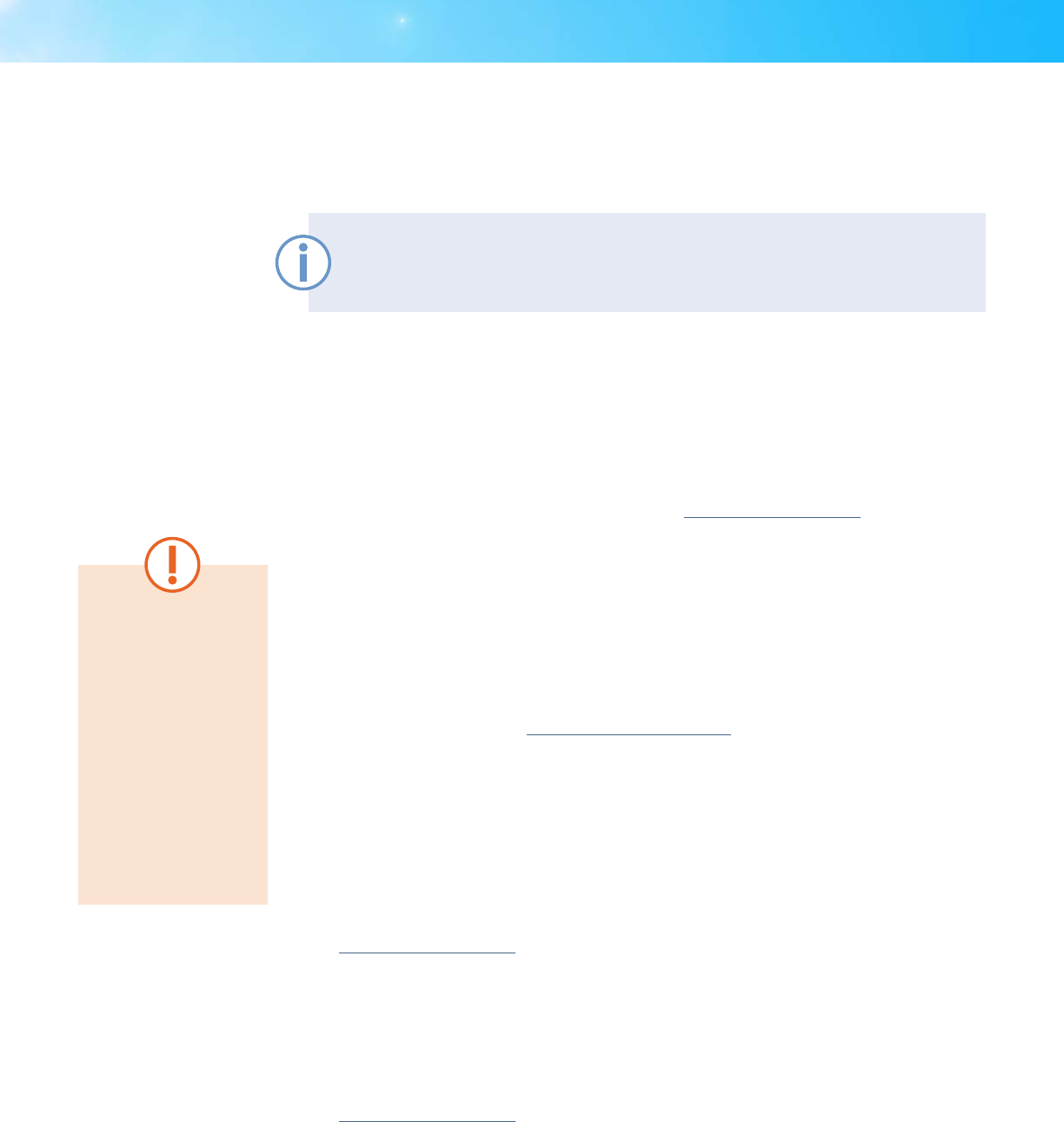
cpuc.ca.gov/solarguide page 6
Low-Income Solar Programs
Available to PG&E, SCE, and SDG&E Customers
If you are not a PG&E, SCE, or SDG&E customer, call your electricity
provider or check their website to see if any low-income solar options are
available to you.
If you currently receive or qualify for a discounted electricity bill through the California
Alternate Rates for Energy (CARE) or Family Electric Rate Assistance (FERA) program,
you may qualify for assistance installing solar at low or no cost using one of the programs
to the right.
You may also qualify for one of these programs if you live in a disadvantaged community
(DAC). A DAC is a neighborhood vulnerable to multiple sources of pollution. To nd out
if you live in a qualied DAC, check out the map: cpuc.ca.gov/solarindacs.
SASH Program & DAC-SASH Program
e SASH Program provides discounted rooftop solar for income-qualied single families.
If you qualify, your family can get assistance installing solar at low cost. e DAC-SASH
program is designed for CARE- or FERA-eligible single-family homeowners who live in
a DAC. If you qualify, your family can get assistance installing solar. GRID Alternatives
administers the SASH and DAC-SASH programs.
See if you qualify by visiting gridalternatives.org/qualify or by calling GRID Alternatives
at 866-921-4696.
DAC-Green Tari Program
e DAC-Green Tari Program is designed for eligible households that live in a DAC.
Participants can have 100 percent of their electricity oset by solar generation and receive
a 20 percent discount on their electricity bills. In this program, you do not have to install
solar on your roof. e solar is installed elsewhere and the bill credits are assigned to you.
See cpuc.ca.gov/solarindacs for more information on eligibility and how to sign up.
Community Solar Green Tari Program
e Community Solar Green Tari Program allows households in a disadvantaged
community to subscribe to a solar farm within 5 miles of their neighborhood and receive
a 20 percent discount on their electricity bills.
See cpuc.ca.gov/solarindacs for more information on eligibility and how to sign up.
PACE nancing
is not a “free
government
program." If
someone describes
it this way to you,
please read about
false claims on page
2 of this guide. You
can learn about
PACE nancing on
page 14.

cpuc.ca.gov/solarguide page 7
STEP 2:
Understand Roles and Solar Process
Solar Providers
Solar providers are the companies that sell you solar
and send installers to your home. Sometimes they
provide nancing. ey must be licensed. See page 4.
Salespeople
Salespeople work for solar providers and may call
you or knock on your door. ey must be registered,
with some limited exceptions. Ask for their “home
improvement salesperson (HIS) registration” and
check it at 800-321-CSLB (2752) or cslb.ca.gov/
consumers.
Installers
Installers are sent by solar providers to your home to
check roof, ground, and electric conditions and to
install the solar system. ey must be licensed like a
solar provider. See page 4.
Manufacturers
Manufacturers are the companies that make solar
equipment. ey provide most solar warranties for
purchased systems.
Electricity Providers
Electricity providers interconnect your solar system
to the electric grid and send you electricity bills that
may include solar bill credits.
Lenders
Lenders provide you with nancing if you have a
solar loan.
PACE Program Administrators
Except for a few governmental PACE programs,
PACE nancing programs are managed by PACE
program administrators, which must be licensed.
Check their license at dfpi.ca.gov/pace-program-
administrators.
PACE Solicitors and PACE Solicitor Agents
PACE solicitors are organizations, such as contractor
companies; and PACE solicitor agents are individuals,
such as home improvement salespersons. ey are
authorized by PACE program administrators to
solicit property owners to enter into PACE nancing
agreements. Check their enrollment with a PACE
program administrator at dfpi.ca.gov/pace-program-
administrators.
City/County Inspectors
City/county inspectors come to your home to make
sure the system is up to code to ensure your health
and safety.
Solar Providers
Lenders
PACE
Administrator
Manufacturers
Installers
Electricity Providers
Salespeople
City or County
Inspectors
Residential
Solar
2
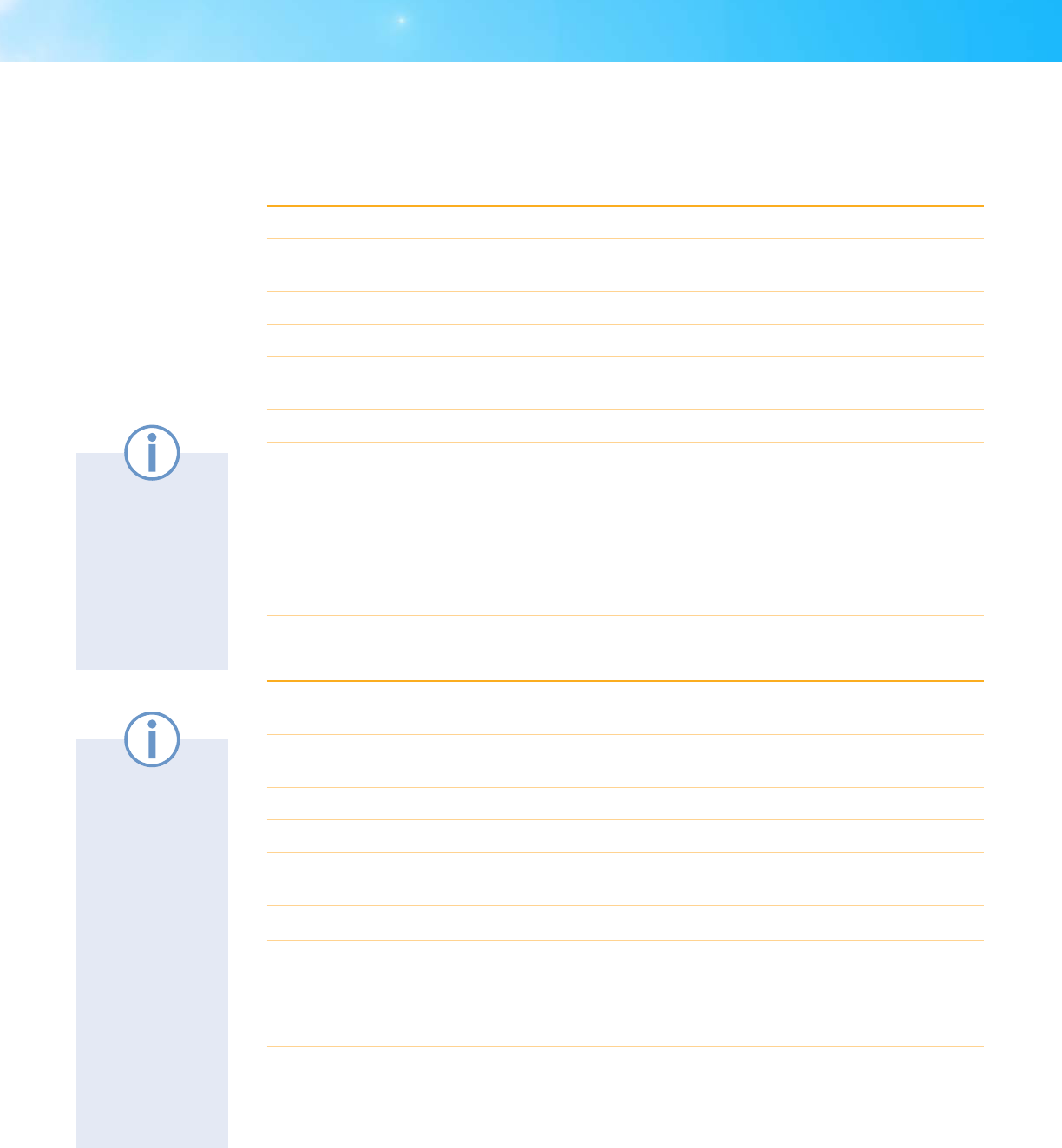
cpuc.ca.gov/solarguide page 8
It typically takes
1 to 3 months
aer you sign a
contract for the
solar system to
be installed at
your home.
Aer the solar
system is
installed, it
typically takes
2 to 3 weeks
to receive
approval from
your electricity
provider to turn
your system
on. It could
take longer
depending
on your
circumstances.
Overview of a Typical Rooop Solar Process
Before You Sign a Contract
You decide if rooop solar is a good t for you (see page 5)
You get a home energy assessment to make your home more energy eicient
(see page 5)
You look at low-income solar programs to see if you qualify (see page 6)
You research solar providers and compare at least 3 bids (see page 9)
Solar Provider provides you with contract and Solar Energy System Disclosure Document
(see page 9)
You qualify for nancing, if needed (see page 12)
Lender/PACE Program
Administrator
writes up nancing agreement (if needed)
You review solar contract, Solar Energy System Disclosure Document, and any
nancing agreement (see page 19)
You go through checklist on page 22 of this Solar Consumer Protection Guide
You sign this guide, the solar contract, and the nancing agreement
Aer You Sign A Contract
Installer performs a home site visit to conrm assumptions and check roof, ground,
and electric conditions
Solar Provider nalizes system design and applies for building permit with city or county
agency
Installer installs the solar system (only aer receiving city/county permit)
City/County Inspector inspects system for building permit compliance when applicable
Solar Provider submits application to electricity provider to interconnect solar system to
grid
Solar Provider submits city/county inspection approval to electricity provider
You turn on system only aer receiving written approval from electricity
provider
Electricity Provider sends you your rst electricity bill with solar/net energy metering credits
(see page 17)
Lender/Solar Provider sends you rst bill for solar system or solar energy*
*If you use PACE nancing, you will not receive a bill from a lender or solar provider (the last
step above). Instead, your payments will be due once or twice a year with your property taxes or
monthly with your mortgage payment.

3
cpuc.ca.gov/solarguide page 9
STEP 3:
Find a Qualied Solar Provider
For low-income solar programs, go to page 6.
Find Solar Providers that Serve Your Neighborhood
Go to cslb.ca.gov, a government website, and click on “Find My Licensed Contractor." Enter
your city and one of the following license classications: C-46 (Solar Contractor), C-10
(Electrical Contractor), or B (General Building Contractor).
Go to californiadgstats.ca.gov, a government-funded website, to enter your ZIP code and see a
list of solar providers and recent installation costs. Note that these costs are not veried by the
government.
Check to see if your county has a County Contractors Association with licensed solar providers.
Ask friends and neighbors who had solar installed at least a year ago if they recommend a solar
provider and why.
Narrow Down the List to Qualied Solar Providers
First, make sure solar providers you consider have a valid license from the CSLB. It is illegal for
solar providers and their installers to conduct business without a license.
• Go to the Contractors State License Board (CSLB) website at cslb.ca.gov/consumers or
call 800-321-CSLB (2752) to see if the solar provider and installer licenses are active and
valid. e licenses must be in the classication C-46 (Solar Contractor), C-10 (Electrical
Contractor), or B (General Building Contractor).
Find out how long the company has been in business and how many installations they have done.
Visit the CPUC’s public list of non-compliant solar providers, which identies contractors that
have violated CPUC, CSLB, or DFPI regulations. is list is updated quarterly and can be found
at cpuc.ca.gov/solarpubliclist.
It’s a good sign if companies employ installers certied by the North American Board of Certied
Energy Practitioners (NABCEP), a high standard in the industry.
Get Bids From At Least 3 Qualied Solar Providers,
Compare Bids, and Ask Questions
After you narrow down the list of solar providers, ask for a bid or price quote.
• Look up how to compare solar quotes online and compare the bids you have obtained.
• Note that the cheapest bid is not necessarily the best option for you. A very low bid may
indicate that a solar provider is trying to cut corners.
e CPUC recommends that solar providers give out this guide during their rst contact with
potential customers. Don’t hesitate to ask solar providers a lot of questions up front. A qualied
company will be happy to answer all of them. A sample list of questions is on the next page.

cpuc.ca.gov/solarguide page 10
Questions to Ask a Solar Provider
Before You Sign a Contract
Company Background
What is your company’s contractor license number from the Contractors State License Board (CSLB)?
What is your installer’s contractor license number?
Is the salesperson an employee of your company?
Will you subcontract with another company to install the solar system? If so, what is their CSLB
contractor license number?
How long have you been in business, and how many systems have you installed?
Can you provide me with three customer references to call or visit? These customers should have solar
installed for at least a year.
Design & Roof
Is my roof a good candidate for solar? Why?
Does my roof need to be replaced before installing solar panels?
• If yes, how much will that cost, who will do it, what is their license number, and is there a roof
warranty?
Why did you choose this specic design and size for the solar system you are recommending to me?
• Note that a system sized to cover all of your electricity needs isn’t necessarily the best investment.
Typically, a system is sized to around 80-85 percent of your electricity use from the previous year.
What steps will you take to ensure my roof won’t leak?
Roughly how much will it cost to remove and re-install the panels if I need to replace my roof in the
future, including inspection fees?
Warranties & Performance of Solar System
Are there warranties for the panels and inverters?
• If yes, how long do they last and whom do I contact to replace these components?
• If equipment such as the inverter fails aer the warranty period, how much will it cost to replace?
Are there warranties for labor/construction?
Are repairs and maintenance included in the contract? If yes, who should I contact for repairs?
Will I be able to monitor the performance of the system once it’s installed? If so, how?
Does the solar provider oer a minimum energy guarantee (common with leases and power purchase
agreements)?
• If yes, how will I be compensated if the system does not produce as much energy as promised
in the contract?
Is there an insurance policy that comes with the solar system, or do I need to take out additional
homeowner’s insurance? Note that this is especially important if you live in re-prone areas.

cpuc.ca.gov/solarguide page 11
What are my obligations in the contract if my solar system stops working due to a disaster like an
earthquake or a re?
Who has the right to claim the environmental benets of the power generated by my system?
(See “Getting Environmental Credit for Going Green” on page 18).
Electricity Bill Savings Estimates (see page 17)
Please beware of a solar provider who tells you solar is free – it is not.
See page 2 for more information on false claims.
Will you explain to me why an electricity bill savings estimate is not a guarantee?
What electricity provider bill escalation rate is assumed in your electricity bill savings estimate?
• Note that the CPUC has capped this escalation rate assumption at 4 percent per year.
What electricity rate plan do you recommend I switch to for solar, and why?
• How long will I be on that rate plan, and how can I compare or change rate plans on my electricity
provider’s website?
• Note that each electricity provider has a rate plan comparison tool or page on its website.
Even though I will continue to pay electricity bills aer going solar, I can receive solar bill credits
on my electricity bill. How does that work?
Is there an option to pay my electricity bills monthly instead of annually, so the costs are more even
throughout the year? How do I sign up?
Does my electricity provider oer special rates for solar customers?
Impacts On Future Sale of Your Home
Will a solar system make it more diicult for me to sell my home or renance?
For leases, power purchase agreements (PPA), and PACE-nanced systems:
• What happens if the home buyer doesn’t want the solar system or doesn’t qualify to take on my lease,
PPA, or PACE-nanced system?
• Are there fees if I need to terminate the contract early to sell my house?
• Are there fees for transferring the lease, PPA, or PACE nancing to a new homeowner?
Timeline (see page 8)
When do you propose to start and nish installing solar on my roof?
Aer installation is complete, roughly how long will it take for my electricity provider to send me written
approval to turn my system on?
What situations would allow me to be released from a contract?
For questions
about
nancing,
read the next
section!

4
cpuc.ca.gov/solarguide page 12
STEP 4:
Compare Your Financing Options
The most common solar nancing options are:
• Purchase of a solar system with a solar loan or cash. With a purchase, you own the system.
• Property Assessed Clean Energy (PACE) nancing of the upfront costs of a solar system,
which you pay back on your property tax bill. With PACE nancing, you own the system.
• Lease of a solar system, in which the solar provider owns the system and “rents” it to you for a
scheduled monthly payment over a set number of years.
• Power purchase agreements (PPA), in which the solar provider owns the solar system and sells
you the electricity it generates for a certain price over a set number of years.
e next few pages contain a quick look at each option’s pros and cons, and then a closer look at
each.
PROS CONS
Purchase with
Cash or Loan
Typically, greater return on investment.
If you use a loan, little or no upfront costs.
May increase value of home.
You can directly receive tax credits and
deductions. Consult tax professional to see if
you qualify.
You are typically responsible for repairs and maintenance.
This may involve contacting dierent manufacturers,
who could go out of business during the 10- to 20-year
component lifecycles.
Some solar loans place a lien on your property. In those
cases, if you do not make your payments, this could result
in foreclosure or make it more diicult to sell your home or
renance your mortgage.
PACE
Financing
Little or no upfront costs.
May have a longer repayment period than
typical home improvement loan, which may
be preferable.
You can directly receive tax credits and
deductions. Consult tax professional to see if
you qualify.
PACE nancing results in a rst-priority lien on your property.
Your bank may require you to pay o the PACE assessment
prior to renancing.
If you do not make your PACE payments, this could result
in foreclosure or make it more diicult to sell your home or
renance your mortgage.
You are typically responsible for repairs and maintenance.
This may involve contacting dierent manufacturers,
who could go out of business during the 10- to 20-year
component lifecycles.
Lease
and PPA
Little or no upfront costs.
Solar provider is responsible for all
monitoring, maintenance, and repairs.
Minimum energy production oen
guaranteed.
Selling home may be more complicated than with a
purchased system. Options typically are: the new owner must
agree to take on the lease/agreement, you continue making
payments, or you buy out the lease/agreement, which could
be thousands of dollars.
Solar provider could go out of business during the contract
period.

cpuc.ca.gov/solarguide page 13
A Closer Look at Purchasing Outright (with cash or loan)
You can purchase a solar system from a solar provider or manufacturer with a traditional loan,
solar loan, or cash. In this approach, you own the installed system. Types of loans include:
• Secured loans: these require an asset that will serve as collateral for the loan – often that asset
is your solar system.
• Unsecured loans: these do not require any collateral, similar to a credit card.
A secured loan is often preferred because it typically has lower interest rates.
Many solar providers work with lenders that oer solar loans, but you should check with
banks and credit unions as well. Compare oers to make sure you are being oered a reasonable
interest rate.
If you install and own a solar system by the end of 2022, there is a 26 percent federal income
tax credit (ITC) available. Under current law, the federal ITC is scheduled to drop to 22
percent for systems installed in 2023 and then 0 percent for systems installed after 2023. If you
have questions about the ITC or whether a loan is tax deductible, speak to a Certied Public
Accountant (CPA) for tax advice.
Unless you purchase a maintenance plan or your system comes with one, you will be responsible
for any maintenance and repairs. Make sure you save the equipment warranties, particularly for
the inverter, which may need to be replaced sooner than other equipment. If you sell your home,
look for real estate agents and appraisers with experience selling homes with solar. You may
include the system in the house sale just like any other major home improvement.
Questions to Ask a Lender About the Purchase of a Solar System with a Loan:
What is the total cost of the loan over the entire course of the contract?
How much will I pay up front, how much over time, and for how long?
What is my interest rate?
What is my annual percentage rate (“APR”)?
Whom do I contact if I have questions about my loan payments?
Will a solar loan make it more diicult for me to sell or renance my home?
Will I need to buy out my loan? Whom do I contact?

cpuc.ca.gov/solarguide page 14
A Closer Look at PACE (Property Assessed Clean Energy)
PACE is a nancing option that is available in some areas of California. In most places, it is
sold through PACE solicitors and solicitor agents who are required to be enrolled with a PACE
program administrator. In a PACE nancing arrangement, a PACE program administrator
nances the upfront costs of a solar system, which you then pay through an assessment on your
property tax bill. With PACE nancing, you own the solar system. You should read and review
the terms carefully, and if necessary, consult with a tax professional or attorney.
PACE nancing lasts for a xed term, typically around 10-30 years, and it is attached to your
house. If you sell your house before you have fully paid the PACE assessment, the buyer may
require you to pay o the remaining balance of the assessment, which could be thousands of
dollars. Some mortgage lenders will not loan money to buyers to purchase properties with PACE
liens unless the full assessment is paid.
Unlike leases and power purchase agreements that require monthly payments, PACE assessments
are typically due once or twice a year, in larger lump sums, with your property taxes. Given this
unique arrangement, it’s important to understand how much you will owe and when, so that you
can set aside enough money throughout the year to cover the amount.
If your house is mortgaged and you typically pay your taxes with an escrow or impound account,
your mortgage company may increase the amount you pay monthly to cover the anticipated
increase to your property tax bill. Discuss how PACE will aect your monthly mortgage payment
before you sign an agreement.
Be aware that if you fail to make your PACE payments included with your property taxes or
mortgage, your home could be put in foreclosure.
Questions to Ask a PACE Program Administrator About a PACE-Financed System:
What is your PACE program administrator license number?
(Check the license at dfpi.ca.gov/pace-program-administrators)
Is the PACE solicitor or PACE solicitor agent I talked to enrolled with you? (Check their enrollment with
the PACE program administrator at dfpi.ca.gov/pace-program-administrators)
What is the total cost of the nancing over the entire course of the contract?
How much will I owe for PACE nancing when I pay my mortgage or property taxes?
How many times a year will I owe this PACE payment?
What happens if I want to sell or renance my home? Will selling or renancing be more diicult with
PACE nancing? Is there anything I have to do with the mortgage company?
What are the penalties for failing to pay the assessment on time?
Whom do I contact if I have problems making my PACE payments?
Is the PACE solicitor or PACE solicitor agent I talked to enrolled with you? (Check their enrollment with
the PACE program administrator at dfpi.ca.gov/pace-program-administrators)

cpuc.ca.gov/solarguide page 15
A Closer Look at Lease & PPA (Power Purchase Agreement)
With a lease, the solar provider owns the system on your property and “rents” it to you for a set
period of time. A solar provider will install the solar system on your home, and you will make
scheduled monthly payments in exchange for all the electricity the system produces. A typical
lease contract period is 20-25 years.
In a power purchase agreement (PPA), the solar provider owns the system on your property and
sells you the electricity it generates. PPAs are similar to leases, except that instead of making
a xed monthly payment for the system, you typically pay for all the power the solar system
generates (a xed per-kilowatt-hour rate). e contract will specify the kilowatt-hour rate you
pay in the rst year and every year after that. is rate should generally be lower than your
current electricity rate. A typical PPA contract period is 20-25 years.
• If you sell your house before the lease or PPA contract is over, you will have to pay the solar
provider the remainder of the value of the lease or PPA or transfer the contract to the new
property owner. Make sure you understand the specic contract terms, since buying out a
lease or PPA can cost thousands of dollars.
• Payments for leases or PPAs will typically increase by a specied amount every year based on
an “escalation clause” or “escalator.” Escalators are typically in the range of a 1 percent to 3
percent increase above the rate you paid in the previous year. Be cautious of entering into a
contract with an escalator higher than that.
• ere may be dierent ways to arrange leases and PPAs, such as paying more up front to
reduce your monthly payments.
Questions to Ask a Lender or Solar Provider About a Lease or PPA
What is the total cost of the solar system or solar energy over the entire course of the contract?
How much will I pay up front, how much over time, and for how long?
Will my payments increase over time? How much will they increase and how frequently?
Is there an option to make a down payment to reduce my monthly payments (for a lease) or
kilowatt-hour rate (for a PPA)?
What happens if I wish to end the lease or PPA early?
If I end my agreement early, will I owe a balloon payment and/or an early termination fee? If so,
how much will I owe?
Will a lease or PPA make it more diicult for me to sell or renance my home?
Who will be responsible for monitoring, operations, and maintenance of the solar system?

5
cpuc.ca.gov/solarguide page 16
STEP 5:
Learn About Electricity Bill Savings
Electricity Bill Savings Estimates Do Not Guarantee Savings
Electricity bill savings estimates are educated guesses about how much you could save with rooop
solar. They are based on several uncertain factors. Here are some reasons why it’s possible that
your savings could be lower than the estimate:
• Your future energy use is uncertain. For example, if your family grows, you buy an electric
vehicle, or you decide to turn up your air conditioning in the summer, your energy
use will go up.
• If you sell your home, you could incur additional costs. For example, if a buyer doesn’t want
to take on a lease or PPA, you might have to buy out the contract, which could be thousands
of dollars.
• Electricity prices and rates can change over time. Electricity bill savings estimates typically
assume they will escalate, or rise, by a certain percentage each year (the CPUC has capped
the assumed escalation rate at 4 percent for these estimates). Also, your electricity provider
may require you to switch to a dierent rate plan in the future, which could change how
much you save.
• Your solar system might perform slightly worse than the estimate assumed. For example, if
your area is unusually dusty, the system could generate slightly less energy than estimated.
Before you sign
a contract, ask
yourself:
if the savings end up
being lower than the
estimated monthly
or yearly savings,
does getting rooop
solar still make
sense to me?
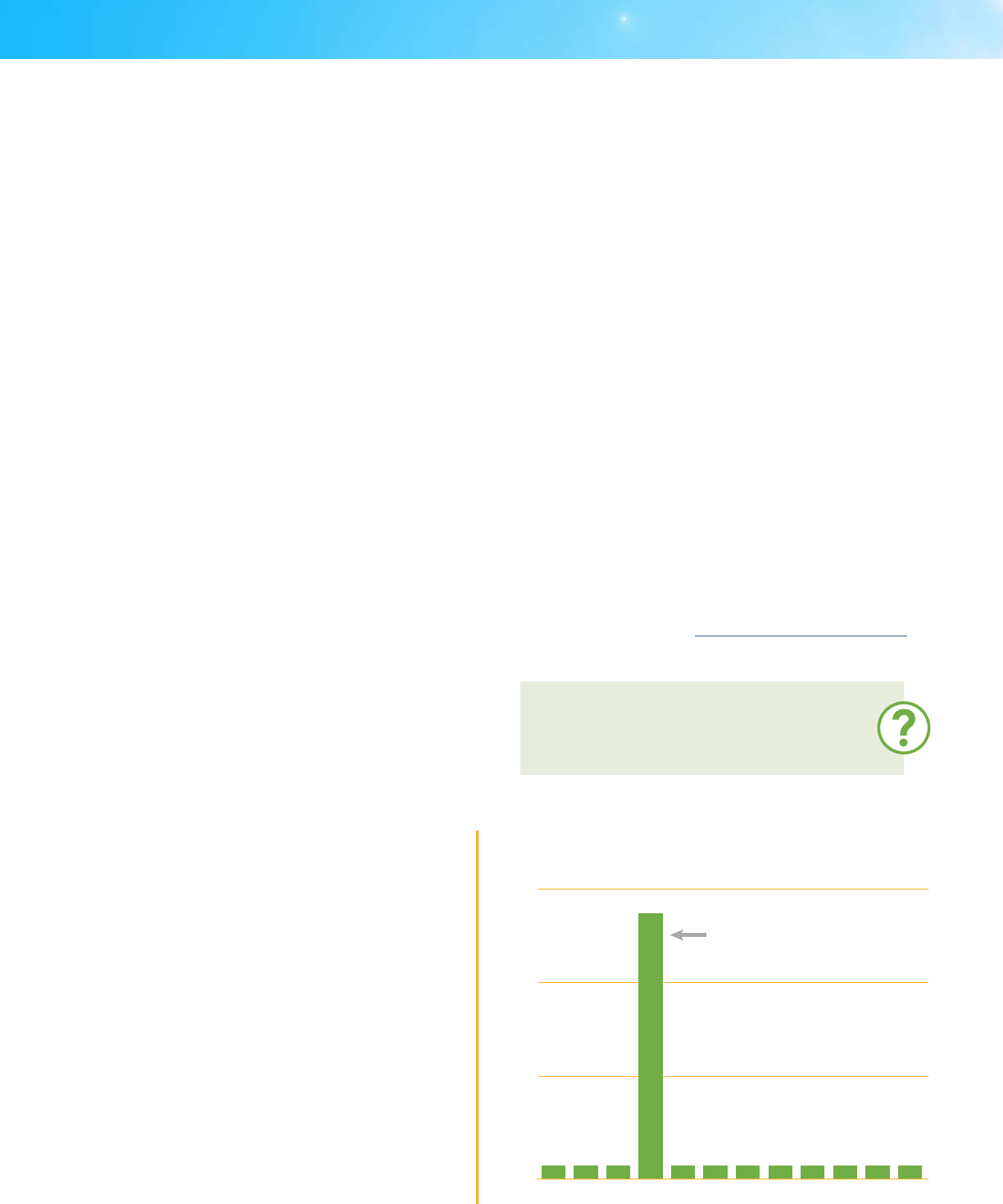
cpuc.ca.gov/solarguide page 17
How Electricity Bill Savings Work
If you go solar, your electricity provider will enroll you in
its Net Energy Metering (NEM) program. NEM allows
you to get a nancial credit on your electricity bill when
your solar system sends electricity back to the grid after
rst powering the electricity needs at your house. Usually,
this credit is approximately equal to the retail rate of
energy. is means that you are credited on your bill about
the same amount that your electricity provider would have
charged you for electricity during that time.
NEM and Your Electricity Bill
Consuming and Exporting Electricity
Since the sun isn’t always shining, solar customers also rely
on electricity from their electricity provider. After your
solar system is interconnected to the grid, your monthly
electricity bill will summarize how much electricity you
took in or “consumed,” from your electricity provider, and
how much electricity your solar system sent to the grid or
“exported.”
Monthly Bill Charges, Credits, and Minimum Amounts
If you took in more than you sent out to the grid in any
given month, you will see an overall charge on your bill.
If you sent out more than you took in, you will see an
overall credit. Typically, you will be able to carry forward
credits to the next month’s bill, and electricity usage charges
will not be due until the end of a 12-month period. Note
that many electricity providers require solar customers to
pay a monthly minimum bill each month just like other
customers. is minimum bill may change over time.
Time-of-Use Rates
PG&E, SCE, and SDG&E solar customers are
required to go on a time-of-use (TOU) rate plan.
A TOU rate plan will charge dierent prices for
electricity depending up on the time of day. Prices
are typically higher between 4 p.m. and 9 p.m.,
called “peak” hours, and lower the rest of the day
and at night during “o peak” hours.
12 Month Settlement Bill
Typically, at the end of a 12-month period, you will
receive a settlement bill, also called a “true up” bill,
that settles all the credits and charges. Even though
going solar can reduce your electricity costs, most
customers still owe some money to their electricity
$
$600
$400
$200
$10 $10 $10 $10 $10 $10 $10 $10 $10 $10 $10
$560
This is an example of a settlement, or
“true up,” electricity bill. It could occur
in a different month for you.
Jan Feb Mar Apr May Jun Jul Aug Sept Oct Nov Dec
Example Of A Settlement, Or “True Up” Electricity Bill
provider at the end of the 12 months. See graphic to the
right that shows an example of an electricity bill over a
12-month cycle for a solar customer.
Some electricity providers give you the option to pay your
settlement bill monthly instead of annually. If you choose
the monthly option, your payments will be more evenly
distributed over the course of the 12 months, and you
will not have to worry about paying a potentially large bill
once a year. Be clear with your solar provider if you want
the monthly option and double-check with your electricity
provider that the correct option was chosen.
ough it's rare, if you sent out more electricity than you
took in over the course of the 12-month period, you are
typically eligible to be paid "net surplus compensation,"
which is around 2 to 3 cents per kilowatt-hour. Because this
rate is lower than the retail rate, it is generally not in your
nancial interest to install a solar system that produces more
energy than you would use over the course of a year.
Currently, PG&E, SCE, and SDG&E customers are
guaranteed NEM for 20 years from the time their solar
system starts operating. Your electricity rate, however, is
subject to change. Go to www.cpuc.ca.gov/electricrates
for more details on how electricity rates work.
If you still have questions aer reading this
section, you can nd help at the additional
resources on pages 20-21 of this guide.
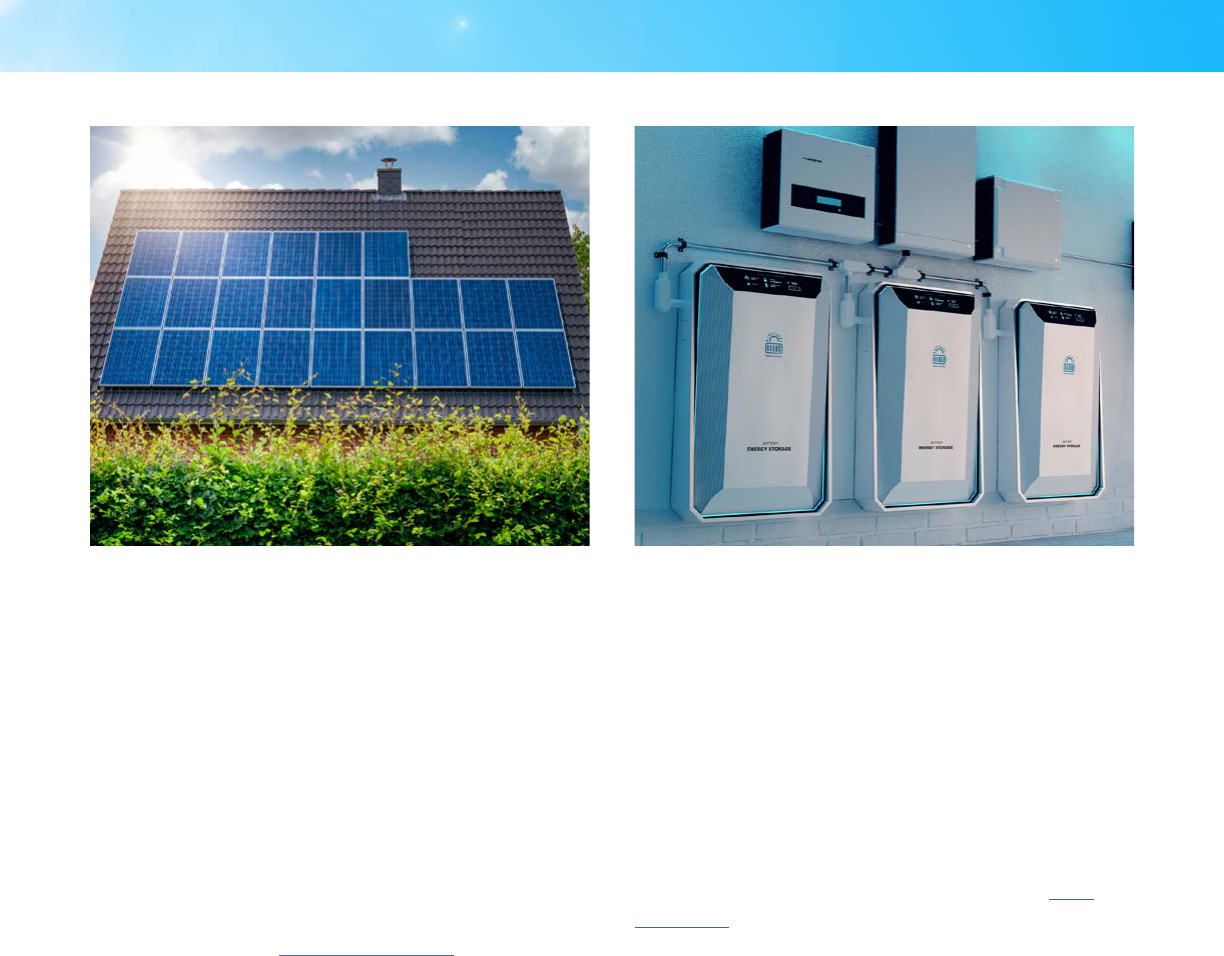
cpuc.ca.gov/solarguide page 18
Getting Environmental Credit for Going Green
When a residential solar system produces electricity, the
system is eligible to receive Renewable Energy Certicates
(REC). If you purchase your solar system, you own any
RECs created. If you enter a lease or PPA, ask your solar
provider who will own the RECs, and check the contract
ne print.
Solar system owners may sell the RECs they generate.
System owners would need to qualify for the Western
Renewable Energy Generation Information System
(WREGIS), which issues and tracks RECs. Please visit
the WREGIS FAQ at wecc.org/WREGIS/ for more
information.
Combining Solar with Storage
When you install battery storage with your solar system,
you can store excess solar electricity produced by your
panels for use in the evening when the sun goes down.
e software that comes with battery storage automatically
determines whether to store the extra energy or export it
to the grid to maximize cost savings. Battery storage can
also provide limited back-up power.
e state-funded Self-Generation Incentive Program (SGIP)
provides nancial incentives to install storage. See cpuc.
ca.gov/sgip for more details on SGIP.

6
cpuc.ca.gov/solarguide page 19
STEP 6:
Carefully Read All Paperwork
The Solar Energy System Disclosure Document
is document from the Contractors State License Board shows you the total costs for the
proposed solar energy system as well as estimated electric bill savings using standardized inputs
and assumptions. It also has information about your three-day right to cancel a contract. A solar
provider is required to ll out this document. It may be placed as the cover page to the contract.
See a blank version at cslb.ca.gov/consumers/solar_smart.
Contract
e solar contract is the legally binding document between you and the solar provider. Make sure
to read it carefully.
Make sure everything you were promised is written in the contract. For example, many answers
to the questions on pages 10 and 11 of this guide should be referenced in the contract.
By law, any contract for solar installation must include:
• Contractor information, including business address and license numbers
• Description of the project, including equipment installed and materials used
• Contract price, plus nance charge and/or down payment if applicable
• Approximate start and end date of the contract term
• Notice of a 3- or 5-day right to cancel the contract (with limited exceptions)
Ask the solar provider what situations would allow you to be released from the contract. For
example, if your solar provider discovers on a site visit that your roof is shaded in a way that
wasn’t expected, that could cancel the contract.
Financial Paperwork
If you are purchasing a system with a solar loan, you will be asked to sign a separate nancing
agreement. e lender will provide you with this separate agreement.
If you are purchasing a system with PACE nancing, you must sign: (1) a Financing Application
and, (2) a Financing Agreement.
• Before you sign the Financing Application, read it carefully to make sure all the information
is correct, including your contact information, your income, and the cost of the solar energy
system.
• e separate nancing agreement may be provided by the solar provider, the PACE program
administrator, or a nancing institution. If you are using PACE nancing, it should include a
PACE Financing Estimate and Disclosure form showing the solar system’s total cost. A link to
a blank version of this document is available at www.cslb.ca.gov/consumers/solar_smart.
Make sure everything you were promised is written into any nancing agreement. For example,
many answers to the questions on pages 13 – 15 of this guide should be referenced in the
nancing agreement.
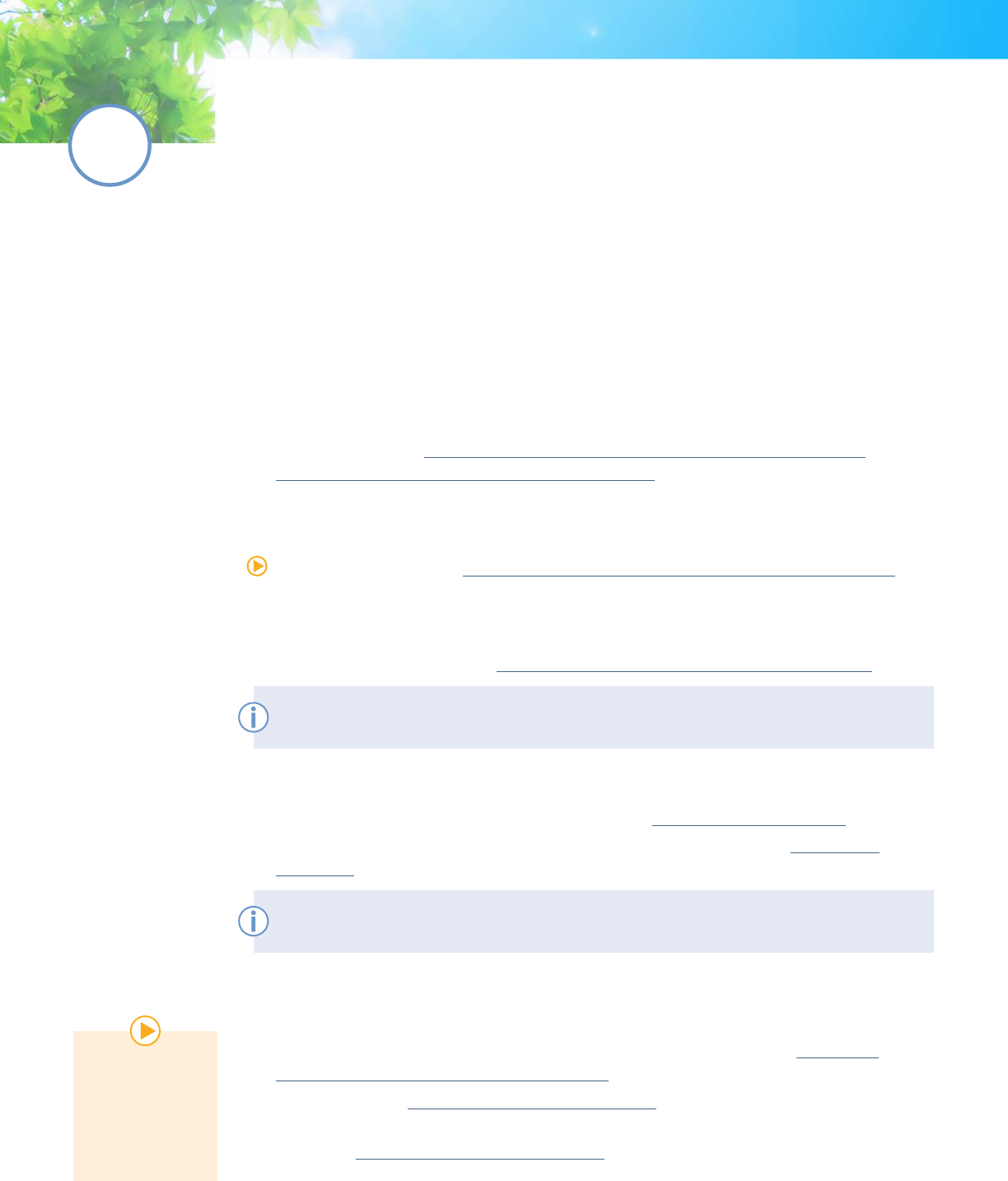
7
cpuc.ca.gov/solarguide page 20
STEP 7:
Review Additional Resources
If you still have questions about any aspect of going solar, nd
resources in the list below where you can read or watch additional
information, or call someone to advise you.
Electricity Provider Solar Programs
Pacic Gas and Electric (PG&E)
• PG&E solar customer service: 877-743-4112
• PG&E clean energy: pge.com/en_us/residential/solar-and-vehicles/options/option-
overview/how-to-get-started/how-to-get-started.page
Southern California Edison (SCE)
• SCE solar phone number: 866-600-6290
• SCE solar power at home: sce.com/residential/generating-your-own-power/solar-power
San Diego Gas & Electric (SDG&E)
• SDG&E solar phone number: 800-411-SDGE (7343)
• SDG&E get started with solar: sdge.com/residential/solar/getting-started-with-solar
If another electricity provider supplies you with electricity, call them or check their
website for details on their solar programs.
Low-Income Solar Programs
• SASH and DAC-SASH program: 866-921-4696 and gridalternatives.org/qualify
• Community Solar Green Tari program and DAC Green Tari program: cpuc.ca.gov/
solarindacs
If you are not a PG&E, SCE, or SDG&E customer, contact your electricity provider
for low-income solar options.
Contractors State License Board (CSLB)
• CSLB 24-hour licensing and consumer information: 800-321-CSLB (2752)
• Check a contractor license or home improvement salesperson registration: cslb.ca.gov/
onlineservices/checklicenseii/checklicense.aspx
• CSLB solar smart: cslb.ca.gov/consumers/solar_smart
• PACE Financing Estimate and Disclosure form and CSLB Solar Energy System Disclosure
document: cslb.ca.gov/consumers/solar_smart
Links with
this icon have
a resource
available in
video format.

cpuc.ca.gov/solarguide page 21
Department of Financial Protection and Innovation (DFPI)
• PACE nancing information: dfpi.ca.gov/pace
• Financial services: 213-576-7690; [email protected]
• PACE program administrator license check: dfpi.ca.gov/pace-program-administrators
• Filing a complaint against a PACE provider: dfpi.ca.gov/file-a-complaint
Solar Bills and Net Energy Metering (NEM)
• PG&E how to read your solar bill: pge.com/en_us/residential/solar-and-vehicles/green-
energy-incentives/solar-and-renewable-metering-and-billing/how-to-read-your-bill/how-to-
read-your-bill.page
• SCE understanding your bill: sce.com/residential/generating-your-own-power/net-energy-
metering/understanding-your-bill
• SDG&E understanding your NEM statement: sdge.com/residential/savings-center/solar-
power-renewable-energy/net-energy-metering/billing-information/understanding-your-
nem-statement
• CPUC NEM overview: cpuc.ca.gov/nem
Solar Financing Guides
• Clean Energy States Alliance (CESA) homeowner's guide to solar nancing: cesa.org/
resource-library/resource/a-homeowners-guide-to-solar-financing-leases-loans-and-ppas
• CESA una guía práctica de nanciación solar para dueños de casa (en Español): cesa.org/
resource-library/resource/una-guia-practica-de-financiacion-solar-para-duenos-de-casa
• CESA/George Washington University rooftop solar nancing 101: cesa.org/projects/
sustainable-solar/videos
Other Solar Guides
• Solar Energy Industries Association (SEIA) Residential Consumer Guide to Solar Power:
www.seia.org/research-resources/residential-consumer-guide-solar-power
• Interstate Renewable Energy Council (IREC) Be Solar Smart Consumer Checklist:
irecusa.org/consumer-protection/consumer-checklist
• CESA/George Washington University Choosing a Solar Installer: cesa.org/projects/
sustainable-solar/videos

8
cpuc.ca.gov/solarguide page 22
STEP 8:
“Before You Sign” Checklist
Make sure you have completed these items before you sign any
documents!
Remember, take your time and don’t feel pressured to sign a contract. Do not sign anything if
you feel you need more time to do research or think about your decision.
Check to see if you qualify for a low-income solar program, which has strong protections for
consumers. See page 6.
Consider making your home more energy eicient before getting solar. This could save you money.
See page 5.
Get at least 3 bids for solar at your home. See page 9.
Ask the solar provider for 3 customer references and call or visit them. See page 9.
Check to make sure the solar provider’s license, and if applicable, the home improvement
salesperson’s registration number, is current and valid with the Contractors State License Board. See
page 4.
Understand the solar purchasing process, including what happens aer you sign a contract for solar.
See page 8.
Ask the solar provider the contract questions on page 4, 10, and 11 so you understand the terms of the
solar contract.
If you are nancing your system, ask the lender, solar provider, or PACE program administrator the
nance questions on page 13, 14 or 15, so you understand the terms of your nancing arrangement.
Read the critical information about electricity bill savings estimates on page 16, and review the
standardized inputs and assumptions on the CSLB Solar Energy System Disclosure Document.
Carefully read all the documents that the solar provider is asking you to sign. These usually include:
1) Solar Energy System Disclosure Document, 2) Contract, and 3) Financial Paperwork. See page 19.
Save copies of all the documents you sign. The information will be useful if you sell your home, need
to replace your roof, or have any repair or maintenance issues.
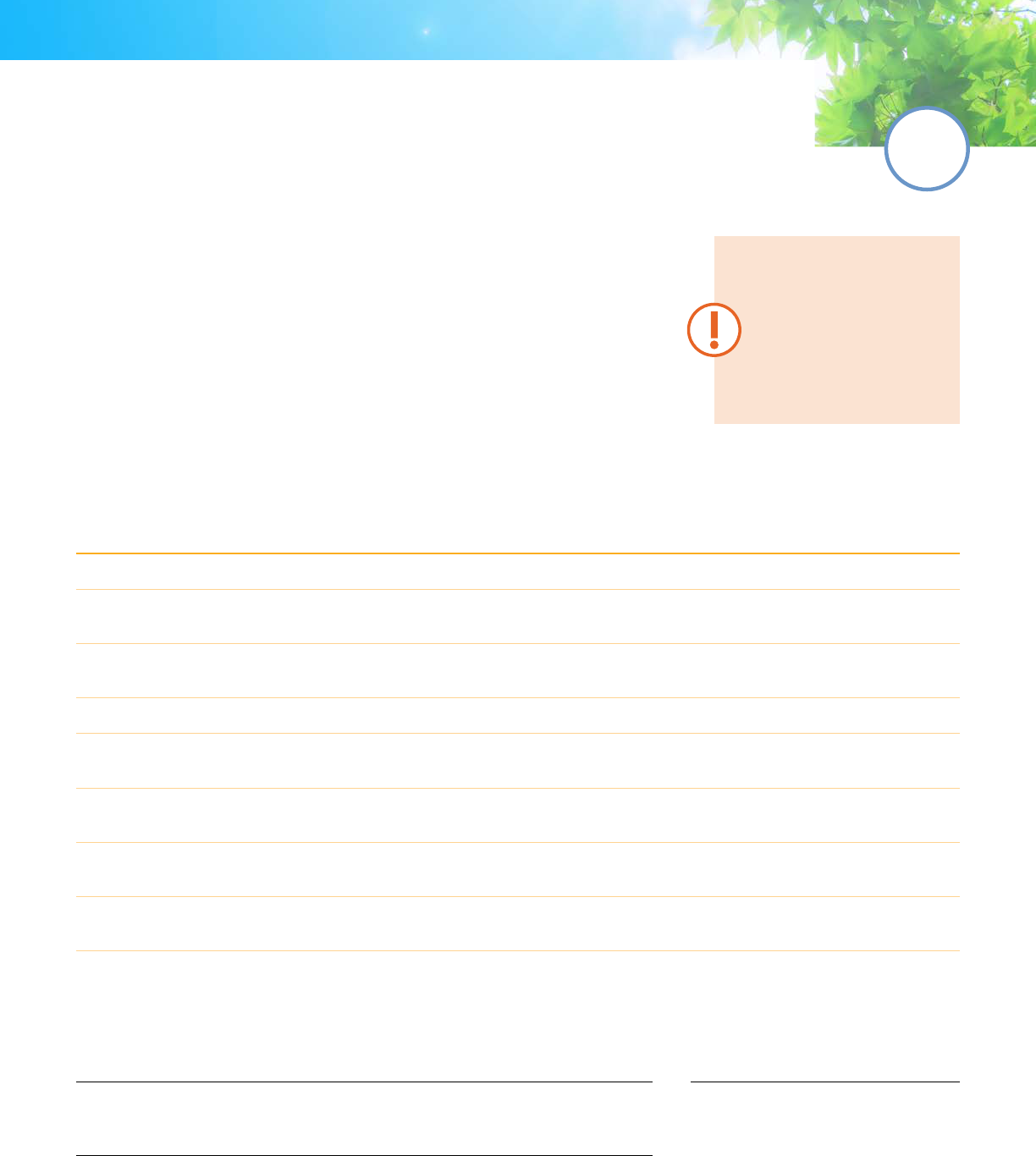
9
cpuc.ca.gov/solarguide page 23
STEP 9:
Sign This Guide
Have you read at least the rst 4 pages of this guide?
e rst 4 pages of the California Solar Consumer Protection Guide contain
important information on false claims to watch out for and your rights.
e CPUC recommends that solar providers* give out this guide during their
rst contact with potential customers, so customers may fully understand what
a solar purchase involves. If a solar provider gave you this guide along with your
contract, the CPUC recommends that you take at least 48 hours to read and
understand this entire guide before you sign below.
Customer
Please arm each of statements below by checking the boxes. If a statement does not apply to you,
write “N/A” in that statement’s box.
I have not yet entered into a contract for solar with the solar provider signing on page 24.
The solar provider provided me with a complete copy of the Solar Consumer Protection Guide before they collected my initials
and signature below.
I read and initialed the rst 4 pages of California’s Solar Consumer Protection Guide. The solar provider gave me the time to read
the entire 24-page guide.
I was provided an option to sign the Solar Consumer Protection Guide electronically or in handwriting.
The solar provider gave me the opportunity to read this guide in Español, 中文, 한국어, Tiếng Việt, Tagalog, Armenian,
Portuguese, or Dari if they spoke to me in one of those languages.
If I was solicited as part of a door-to-door sale, the solar provider oered me the option to sign the Solar Consumer Protection
Guide with a handwritten signature by default. I was also given the option to sign with an electronic signature.
If I was solicited as part of a door-to-door sale and did not expressly request an electronic format, a complete copy of the Solar
Consumer Protection Guide was provided in paper format.
If I choose to sign the Solar Consumer Protection Guide electronically, I am using an email address
that was created and is controlled by me prior to the sale, lease, or power purchase agreement.
By signing, I arm that I have read and understand the California Solar Consumer Protection Guide. I also arm
that information from my solar contract, interconnection application, CSLB Solar Disclosure Form, and/or nancing
agreement may be reviewed by state regulators to ensure compliance with California’s solar consumer protection laws.
March 2022
continued on page 24
Customer Printed Name Date
Customer Signature
Do not feel pressured
to read the complete
document while the
salesperson waits.
Ask them to come back
at a later date to allow
you time to read it.
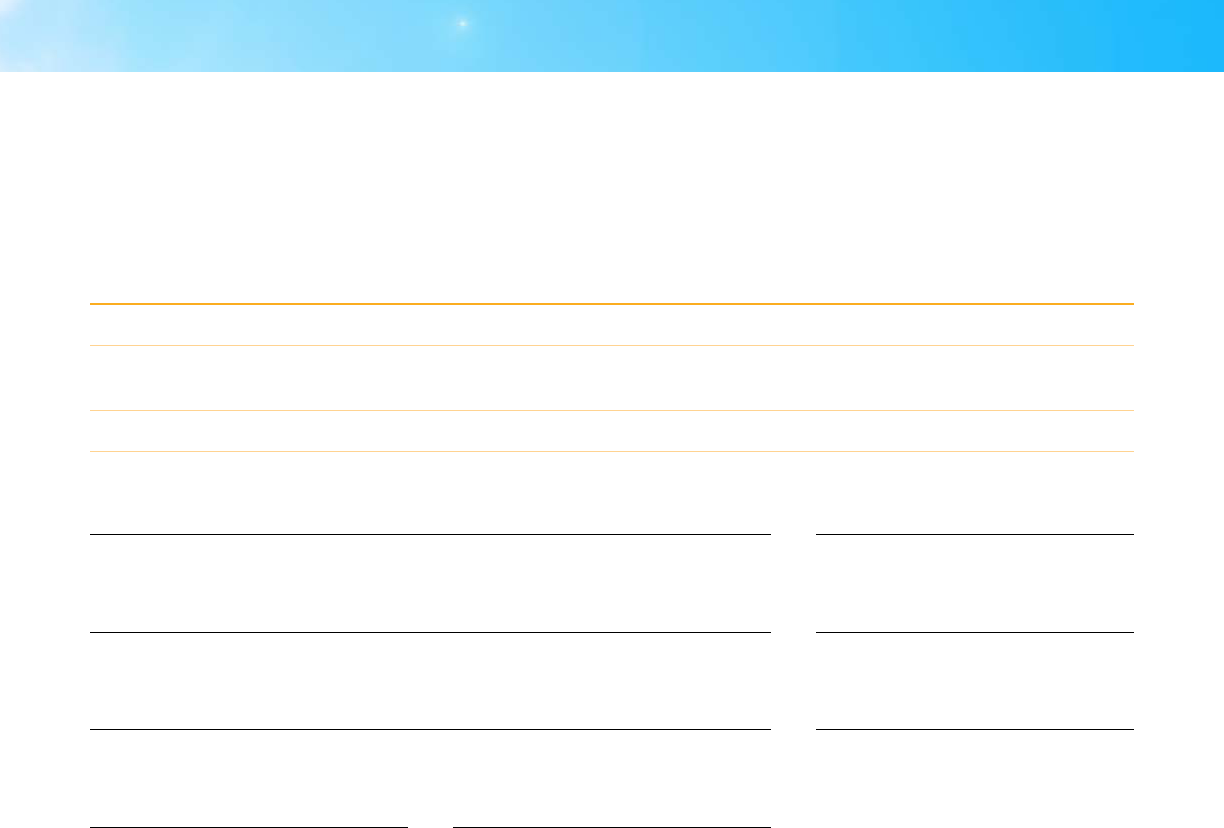
cpuc.ca.gov/solarguide page 24
*A solar provider is dened in California Public Utilities Commissioner Decision (D.) 18-09-044 as a vendor, contractor,
installer, or nancing entity that enters into a contract for a power purchase agreement, lease, or purchased solar system.
Pacic Gas and Electric Company (PG&E), Southern California Edison (SCE), and San Diego Gas & Electric (SDG&E)
require solar providers to upload a signed copy of this page with a signature to their interconnection portals before
interconnecting residential customers in single-family homes to the electric grid. is requirement does not apply to new
home construction, multifamily buildings, or solar thermal systems.
STEP 9: Sign This Guide continued from page 23
Solar Provider
Please arm each of statements below by checking the boxes.
The customer initialed the rst 4 pages of the guide.
The customer signed above before entering into a contract for the purchase, lease, power purchase agreement, or
PACE nancing of a solar system or solar energy with the company named below.
The sales presentation to this customer was principally conducted in this language: ________________________________________________________________________
Company CSLB License ClassicationCompany CSLB License Number
DateCompany Representative Name/Title
Company PhoneCompany Representative Signature
Company EmailCompany Name
